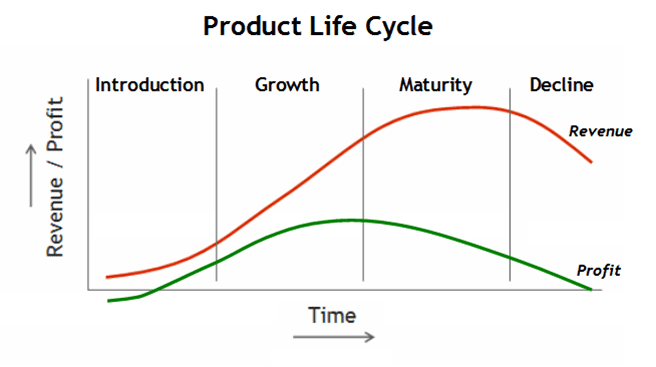Similar to the product planning stages, the life of a product also has its stages. The stages of a product’s life are called the product life cycle .
Understanding the product life cycle is very important in the business world. Through this cycle, business people can plan marketing strategies when products start to decline.
Understanding Product Life Cycle
The product life cycle is a stage in the life of a product, starting from when the product was launched until it finally had to be withdrawn from the market.
A product must have its own time of success. There are times when a successful product will also experience setbacks.
This setback is usually caused by competitors with superior products and changes in trends or fashions.
However, the product life cycle can also be influenced by technological developments, shifts in values, and economic conditions.
Using this concept, companies can determine when they should increase promotions, lower product prices, expand product markets, or change the packaging design of their products.
Product Life Cycle Stages
There are four stages in the product life cycle . Each product will go through the stages of introduction, growth, maturity, and decline . The following is an explanation of the four stages of a cycle .

1. Introduction
The first stage is introduction . This stage is the stage to introduce the product to the public.
This stage is a determinant of whether the product will be successfully accepted by the public or will be rejected by them.
The main purpose of this introduction stage is to build brand awareness . In addition, this stage also aims to increase market demand for a product.
Therefore, the company will invest a lot of money in advertising and marketing.
2. Growth
When the product that you introduce to the public is well received and a purchase occurs, your business will start a new stage, namely the growth stage .
At this stage, the company’s turnover will increase. However, there will be the possibility of the emergence of competitors with the same or superior products at the growth stage .
Therefore, companies must be more aggressive in promoting.
Sometimes companies will even consider changing prices to be more competitive by lowering them.
However, even though product prices have fallen, the company still has a large income. Because the sales also increased.
3. Maturity
At this stage, product sales will be flat and even begin to decline.
Product competition will be even tighter at this stage. So many companies will lower the price of their products.
However, due to reduced consumer demand, this will make the company’s profit margin decline.
Therefore, another way to overcome this stage is to innovate the product. Companies can develop products or replace them with other products.
4. Decline
The last cycle of a product is decline . Even though the company has tried to maintain the product at the maturity stage , there is still a possibility if the product continues to decline.
At this stage, the product will experience a significant decline until it finally loses the market.
This decline could be due to new products that better meet their needs. In addition, saturation, changing needs, and changes in consumer behavior are also factors driving the decline in products.
The company will eventually lower the price of the product. They will also focus more on loyal customers.
Closing
That’s the description of the stages of the product life cycle . Understanding the product life cycle will allow you to set a strategy to maintain the product market.
—

